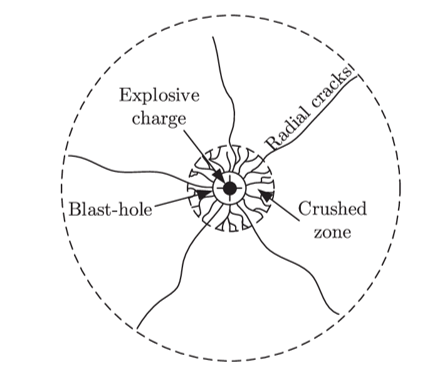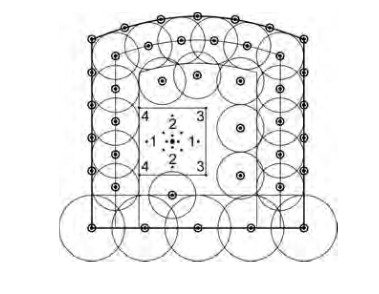Practical Damage Zone
Many studies and techniques have been conducted to describe and quantify blast-induced damage of surrounding rock mass (a summary of the most notable studies is provided by Slavko Torbica & Veljko Lapčević: Estimating extent and properties of blast-damaged zone around underground excavations). However, the reality is that no single method can be consistently relied upon to accurately predict the outcome of a blast.
In heading round blasts, the control and prevention of perimeter damage is particularly important.
Given the radial crack patterns normally observed around a blasthole, the concept of a practical damage zones is known to be used to aid in the design of the perimeter holes. In this context the term “practical” means that if the rock mass lying outside of this ring were removed, the rock remaining within the ring would easily break apart.
In its simplest form, the practical damage zone is based on a radius of damage, which corresponds to the extent of blast induce damage. If the length of the radial cracks is known, then the expected practical damage zone can be used as an aid in the design of holes.

Image source: MDPI under Creative Commons Attribution Licence
Example of how practical damage zone may be used:

Image source: ‘A gas pressure-based drift round blast design methodology’ | William Hustrulid & Jeffrey Johnson: NIOSH Spokane Research Laboratory, USA